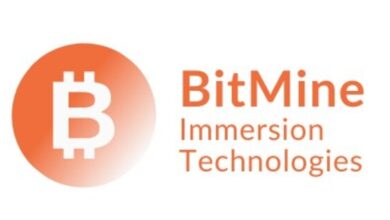How Blockchain is disrupting the traditional brokerage industry

“If you want to know the value of one minute, ask the person who just missed the bus.
“If you want to know the value of one second, ask the person who just escaped death in a car accident.
“And if you want to know the value of one-hundredth of a second, ask the athlete who won a silver medal in the Olympics.” Marc Levy
Stockbrokers don’t have much in common with athletes (most of us at least!) but one thing we do share is an appreciation for the importance of timing. Fortunes can be made or lost in milliseconds, now more than ever before.
Transactions that previously took days to research and complete can now be done in seconds. The rate of progress has been dramatic and deserves to be celebrated, regardless of what the critics may say. Technology has of course been the key driver in making markets significantly faster and more efficient, but until recently, online markets were merely a digital representation of the age-old model.
For centuries, the financial and insurance industries depended on a paper trail of agreements and contracts. Today, the entire mechanism of financial asset management and insurance has been transferred online but the main difference up to now has been the ability to do things faster. That is set to change. A new generation of tech-savvy customers and developers and the massive storehouse of data has led to a tidal wave of disruptive innovations in recent years — the newest and most exciting being Blockchain.
The Blockchain movement is gathering momentum and speed with each passing day. Blockchain has already had a significant impact on the future of money, finance, supply chain management and other sectors. The new kid on the block (excuse the pun) threatens to revolutionize both stock trading marketplaces and the way financial data is stored and transmitted.
Before you continue reading, I should add a disclaimer. I’m not a technical Blockchain developer or expert. I’m a business leader and FinTech fanatic who understands the potential of Blockchain and how it can transform businesses, governments, and communities.
Introduction to Blockchain
Contrary to popular belief, Blockchain isn’t just about Bitcoin. It is in fact the latest solution to interoperability, trust and transparency issues in fragmented market systems.
Simply put, it’s a secure transaction-ledger database which is shared by all parties participating in a collective network. The network is updated through an infinite number of ‘blocks’. In this way, each and every transaction occurs between the network after it has been verified using cryptographic logic. It’s a highly secure means of conducting business transactions and when combined with ‘smart contracts’ presents an extremely unique and attractive solution for the stockbroking industry.
Due to the use of cryptographic techniques, Blockchains are extremely resilient to cyber-attacks compared to traditional databases. Smart contracts are computer programs that self-execute when certain conditions are met. The Blockchain-enabled smart contract can securely compute and record transactions in a distributed ledger with automatic verification.
In 2015, Nasdaq launched the Nasdaq Linq Blockchain ledger technology for their own private securities transactions. The total venture capital investment in Bitcoin and Blockchain start-ups in Q1 2016 exceeded $1.1 billion according to research by Accenture. Another example of the growing acceptance of cryptocurrency by financial markets was the decision by Japan’s Financial Services Agency to give permission to the Japan Exchange Group to use Blockchain as its fundamental trading structure.
The inherent attributes of the technology and its rapid adoption suggests there will soon be a surge in Blockchains large scale usability. What impact is Blockchain likely to have on the financial markets and will those changes be all good?
1) Replacing the faith and trust model with something more tangible
The age-old process of trading and insurance depends on mutual trust between the two parties, brought together by the broker. The broker is responsible for creating trust and bridging the gap between the exchange and the investor. The markets today still rely heavily on the ‘handshake’ model and hence are supplemented by a rigid regulatory framework.
That being said, there isn’t any consistent mechanism for embedding trust into a transaction. The Blockchain technology, on the other hand, requires more than one party in a chain to verify the authenticity of a particular transaction before another block can be updated to the chain.
As a result, there is no longer any need for the participants in the transaction to know each other. Trust is verified through an automated process. The real value of Blockchain lies in the ability to track and approve the transaction. It provides a ‘certified delivery’, which means a transaction can take place without relying on trust alone.
2) Improved security
Blockchain is ultra-secure since the cryptographic technology that underpins Blockchain only allows permitted parties to access relevant content. Identification and eliminating fraud is another strength of Blockchain, since it provides a ‘digital fingerprint’ which helps keep check of the true identities of the parties.
Thus, unlike traditional ledgers, Blockchain doesn’t require a centralized infrastructure or any governing third party since even though these third parties are regulatory bodies, they come with their own set of resilience-related challenges.
3) Reduced costs
Due to the fragility of the traditional system, traders, brokers, regulators, and the stock exchange are required to undergo complicated processes with wait times as long as three days, caused by the role of intermediaries, operational trade clearance, and regulatory processes.Blockchain is extremely efficient due to its key operating factors of automation and decentralization. As a result, it can help bring down the huge costs levied on customers as commission and help speed up the process. The margining system and payment of margin system can be done in an extremely optimal way by valuing the securities deposited on a daily basis as opposed to weekly, while minimizing the risk at the same time.
4) Disruption of repo activity
Blockchain also has a part to play when it comes to repo activity. Repo activity arises due to funding of positions and securities lending activities that are used as a part of trading strategies. Blockchain has the potential for a less costly securities lending process, because fewer processes are involved and the unwinding of collateral happens almost instantaneously.
The wider market would gain from larger liquidity due to the higher levels of collateral available. When assets and transactions of such assets can be recorded on a distributed ledger, everyone knows where the value and status of an asset at a specific point in time and thus, collateral can be traced and moved across the globe seamlessly.
In fact, a few months ago, J.P. Morgan executed an intraday repo transaction using Blockchain, supporting instantaneous settlement and maturity of the transaction in hours, as opposed to days.
However, this does present a challenge. Collateral would no longer be netted and each transaction would need to be fully funded and settled. Despite this, there are large efficiency gains to be enjoyed by intermediaries as there would be lower capital intensity associated with using Blockchain.
5) Fueling transparency across post-trade services
We all know the importance of central clearing houses who ensure that the trade is matched and executed even in the case of default by the parties. Clearing houses confirm trade data and use central securities depositories (CSD) to record transactions and reduce counterparty risk. Custodians who hold these investor assets work with CSD in order to ensure safe transfer of assets and funds. There are many inefficiencies arising from this as they need to maintain records of information around the transaction.The use of Blockchain in post trade allows for a single, distributed and immutable ledge of transaction information that can be updated at each step of the process and hence accessed by all the involved parties. Blockchain with integration of smart contracts can thus enhance efficiency in the settlement process, reduce complexity and shorten the settlement cycle to near real time such as (T+0) as compared to (T+3) or (T+2) as in the current settlement process.
In a report conducted by Oliver Wyman on Blockchain and capital markets, the organization reported post trade and securities servicing fees of roughly $100 billion. The efficiency of Blockchain should lead to a significant reduction in these fees.
The way ahead
The creation and rapid adoption of such a radical new technology has obviously raised many questions, especially with regard to whether we’re living in the age of disintermediation or to put it more bluntly: Are brokers about to become extinct? No.
Blockchain technology isn’t quite in the mainstream yet, but for brokers it is obviously a pressing and urgent question.
Brokers won’t disappear, however, there is likely to be a considerable shift in their duties responsibilities. They will be part of the financial markets ecosystem as enablers, as critical assets for optimizing their network. If smart contracts are exchanged and transactions are enacted via Blockchain, there is a further need for brokers to not just exist as primary liaisons of relationships as they have been doing so till now.
Since Blockchain is a transparent ledger, it means it’s extremely secure to deal with transactions with a third party in place. It will now be a part of brokers’ responsibility to technologically enable themselves and make sure this automated process is on track and steer it as needed.
Risks and challenges
No matter how attractive this proposition may be, effective governance is integral to the successful implementation of Blockchain so that it does its job of protecting participants, investors and stakeholders and at the same time, ensuring full resilience of the system in case of cybersecurity threats and privacy concerns.
Because of the stakes involved, wide scale adoption of this technology can’t be assured and is unlikely to be smooth sailing. Apart from the risks of employing a relatively new technology as a massive institutional reform, there is also the threat of large scale displacement, no matter how small it may be.
However, despite this, one simply cannot ignore the fact that the gains overrule the losses and by a significant amount. Everything from fundraising and asset management, margin financing, post-trade settlements, tracking securities lending and monitoring systematic risk, is likely to be disrupted by Blockchain technology. Blockchain is set to be the Big Daddy of the capital market infrastructure, and it’s safe to say a colossal change in how the stockbroking industry conducts its business is just around the corner.
If you take one thing away from this article, it’s this: digitization, automation and technology can no longer be considered as simply aiding the transaction process. In a short period of time, Blockchain has proven that technology is a lot more efficient, but also widely accessible. When it comes to employing Blockchain in financial markets, I’m convinced that the market only stands to gain from a concept as revolutionary as this one.





